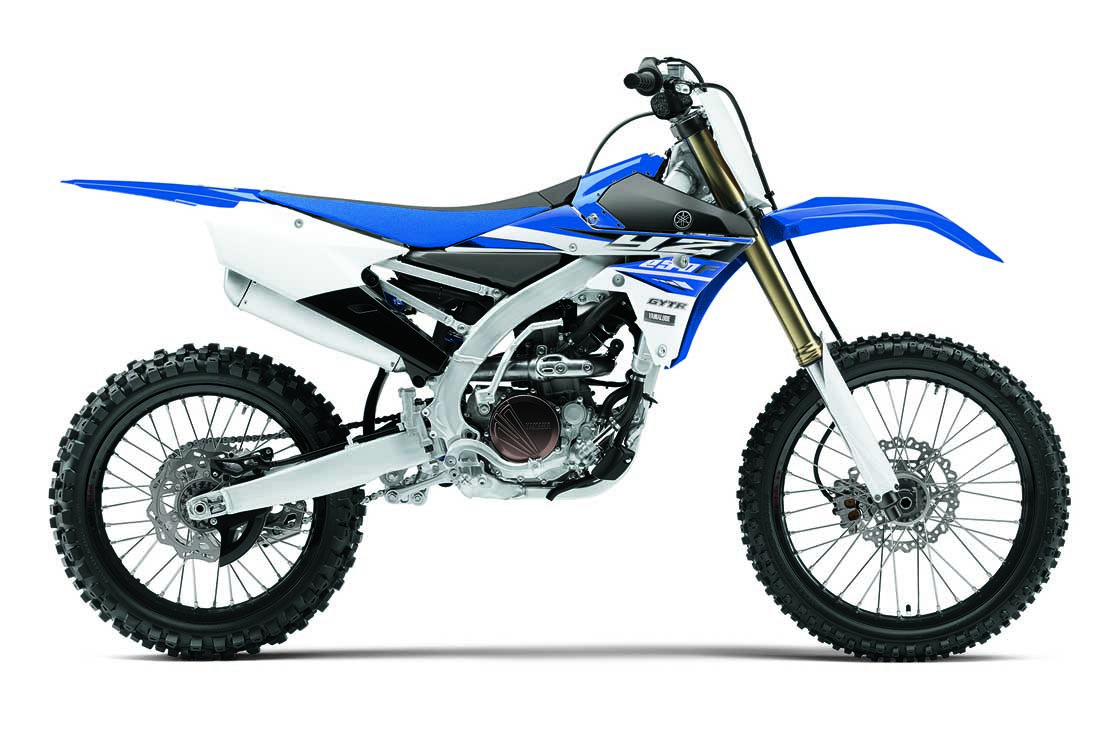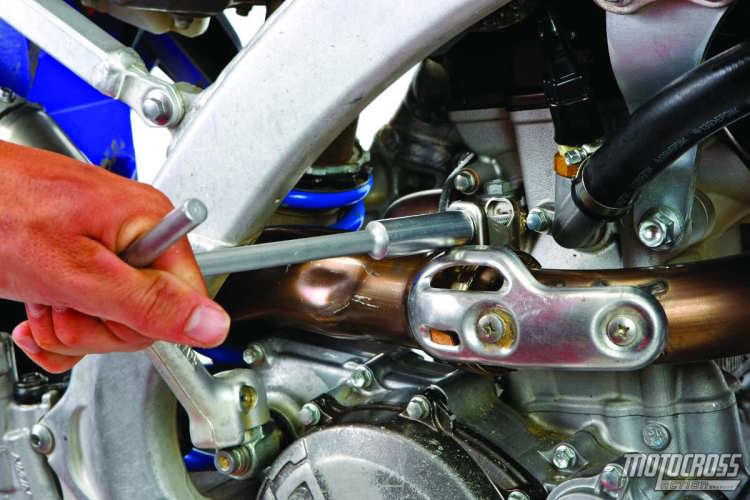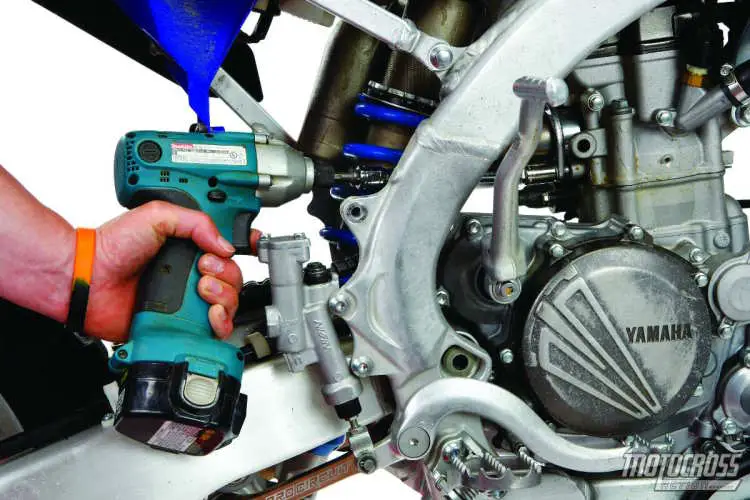HOW TO REMOVE THE STOCK YZ250F/YZ450F SNAKE PIPE
 Removing an exhaust pipe from your pipe is often a thrill ride. Some brands are easy, some brands are hard…and some brands defy description. One of the most complex exhaust system to remove is the wrap-around exhaust on the current generation of Yamahas. There’s a big variance in how long it will take to remove the stock 2014-15 Yamaha YZ250F or YZ450F exhaust pipe. The reason is that even the most experienced mechanic will struggle to remove all of the nuts and bolts with lightning speed. Yamaha didn’t do YZ-F owners any favors with the design of its innovative snake pipe. Practice patience. If you’re replacing the stock exhaust with an aftermarket system, repeat all steps in reverse order.
Removing an exhaust pipe from your pipe is often a thrill ride. Some brands are easy, some brands are hard…and some brands defy description. One of the most complex exhaust system to remove is the wrap-around exhaust on the current generation of Yamahas. There’s a big variance in how long it will take to remove the stock 2014-15 Yamaha YZ250F or YZ450F exhaust pipe. The reason is that even the most experienced mechanic will struggle to remove all of the nuts and bolts with lightning speed. Yamaha didn’t do YZ-F owners any favors with the design of its innovative snake pipe. Practice patience. If you’re replacing the stock exhaust with an aftermarket system, repeat all steps in reverse order.
NECESSARY ITEMS:
• Petroleum lubricant
• 12mm open-end wrench
• T-handle wrenches (10mm, 12mm)
TIME TO COMPLETE:
10–25 minutes








Comments are closed.